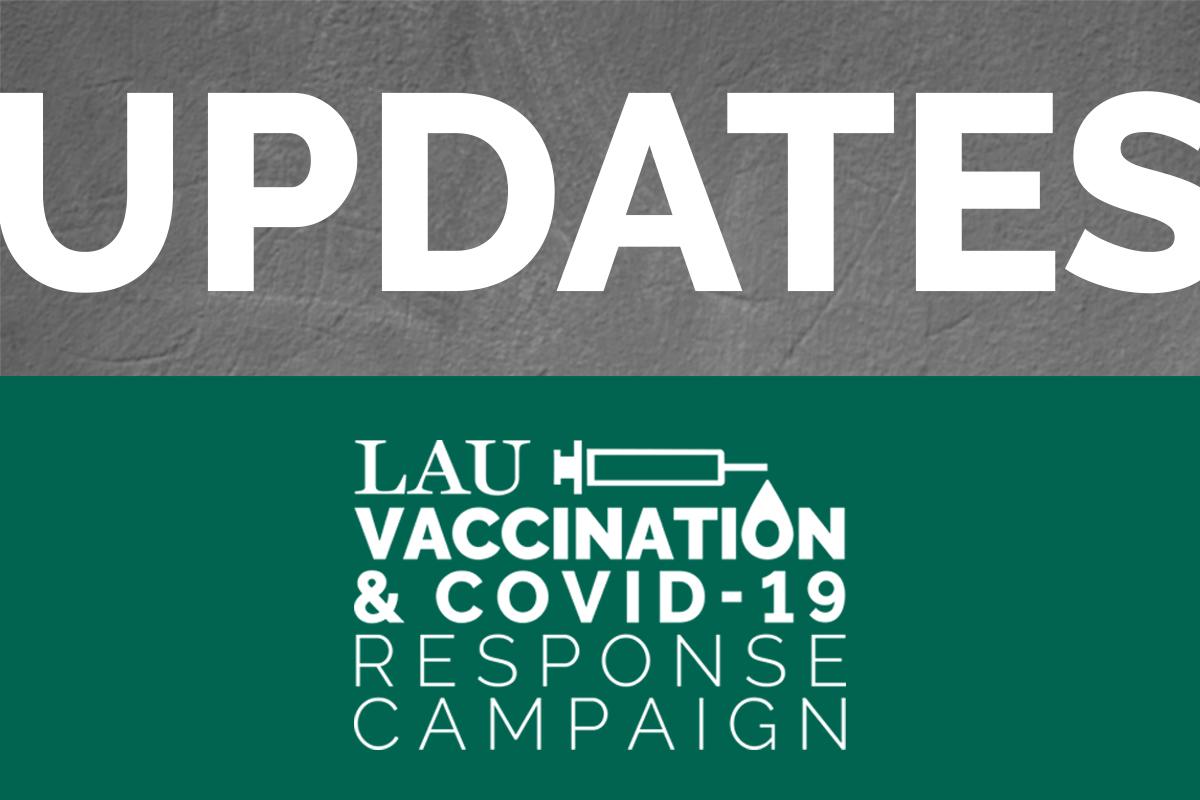COVID-19 Vaccine: Fact vs Fiction – Part II
Dr. Ghada El Khoury explains how the COVID-19 vaccine was developed in record time while meeting the strict criteria of health regulation authorities.
Expounding on the stringent protocols used in vaccine development under the watchful eye of health authorities, Clinical Associate Professor at the School of Pharmacy Ghada El Khoury (PharmD ’07, BCACP) debunks the notion that, because the COVID-19 vaccine was fast-tracked, it is unsafe.
What are the research protocols and procedures involved in initiating work on a vaccine?
Vaccines save millions of lives each year by training the body’s immune system to recognize and fight off the pathogens (viruses/bacteria) they target. When the body is exposed to those disease-causing pathogens through vaccination, it becomes immediately ready to destroy them thus preventing illness.
According to the Centers for Disease Control and Prevention (CDC) and the World Health Organization (WHO), a novel vaccine undergoes general stages before it is approved and licensed.
The initial exploratory stage entails basic laboratory research where scientists identify natural or synthetic antigens that might help prevent or treat a disease.
Next, in the pre-clinical stage, cell-culture systems and animal testing are conducted to assess the safety and ability of the candidate vaccine to provoke an immune response. An Investigational New Drug (IND) application is submitted to the Food and Drug Administration (FDA) with the laboratory reports obtained, before moving on to the clinical stage.
Once the FDA approves the submitted IND application, the vaccine enters the clinical development stage and is subject to three phases of testing. During Phase I, a small group of people (25-50 people) receive the candidate vaccine. In Phase II, it is administered to around 100 people who have characteristics similar to those for whom the new vaccine is intended (such as age and physical health). In Phase III, the vaccine is given to a larger population where thousands of people are tested for efficacy and safety. Many vaccines also undergo a Phase IV, where the manufacturer continues to test the vaccine after its approval, for safety, efficacy, and other potential uses.
So, all vaccines are thoroughly tested because the number of human subjects in clinical trials is vast, and post-licensure monitoring of vaccines is closely examined by the CDC and the FDA.
Is the COVID-19 vaccine safe, given that it was developed in record time?
Developing a vaccine is typically a long road full of checkpoints. Each phase is designed to ensure that the vaccine is effective and safe. In public health emergencies, such as a pandemic, this development process may be atypical.
Due to the gravity of the current COVID-19 health emergency, and with the whole world struggling to contain the pandemic, an unprecedented amount of funding and scientific work were made available to expedite the production of a COVID-19 vaccine. Some of the developmental phases were therefore run in parallel and the research teams submitted requests for temporary authorization from national regulatory authorities and Emergency Use listing from the WHO.
It is also worth noting that the groundwork for the technologies used to generate the different COVID-19 vaccines (mRNA, adenovirus viral vectors) had already been laid out with many preceding years of research.
The WHO and other regulatory authorities give such emergency authorizations only when vaccines meet strict safety and effectiveness criteria, and continue to monitor them for safety and effectiveness, when in use, to ensure they maintain the highest standards.
The efforts to speed up vaccine development to address the ongoing COVID-19 pandemic have not sacrificed scientific standards, the integrity of the vaccine review process, or its safety. According to the WHO, “no one is cutting corners; everyone is subject to the same checks and independent monitoring.”
COVID-19 vaccines submitted to the same number of phases, same safety checks, and the same number of volunteers and rigorous standards set forth by the FDA in clinical trials, which makes them as safe as previously approved vaccines.
Emergency use authorization does not mean FDA approval. Should that be a concern?
FDA is globally respected for its scientific standards of safety, effectiveness and quality applied to drugs and vaccines. Emergency use authorizations (EUA) are relatively new mechanisms that the FDA put in place to facilitate the availability and use of medical countermeasures, including vaccines, during public health emergencies, like pandemics.
It is worth noting that the FDA grants EUA only after certain strict statutory criteria are met, including the absence of adequate, approved, and available alternatives. In other words, the FDA rigorously evaluates EUA requests taking into account the totality of the scientific evidence throughout all phases of the drugs’ or vaccines’ clinical trials.
The first time the FDA issued an EUA was in 2005 for an anthrax vaccine for military personnel. In 2009, it issued the first EUA for civilians, allowing a drug to be used in infants during the H1N1 pandemic. Currently, vaccines against COVID-19 are also issued EUAs to address the global health emergency and potentially limit the pandemic spread and mortality.
The importance of EUAs is particularly understood and highlighted by observing an earlier pandemic: HIV/AIDS that first became visible in North America in 1981. Approval of the first treatment regimens that successfully transformed HIV/AIDS from a fatal disease into a manageable chronic condition did not occur until the late 1990s. Due to the FDA’s typical slow pace of evaluating new drugs, it took around 20 years to approve the urgently needed new drugs for HIV/AIDS. Had an EUA been in place back then, a faster response could have potentially saved lives much sooner.
Historically, the vaccines’ success stories have given us hope for the future. We strongly believe and encourage taking the COVID-19 vaccines, as a powerful tool to end the COVID-19 pandemic the soonest.
This interview has been edited and condensed for the sake of clarity.
